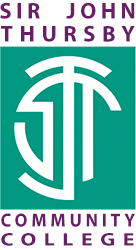Topic 1 Year 8 Physics
| Physics | |||
| Topic | Forces 1 | ||
| No of lessons | 9 | ||
| When is it happening | Term 1 Year 8 | ||
| What will students learn | Students will learn to describe how if the overall, resultant force on an object is non-zero, its motion changes and it slows down, speeds up or changes direction. They will be able to calculate the speed of a moving object using the equation speed = distance / time, rearranging it to find time and distance travelled. Students will draw and interpret distance-time graphs including labelling changes in motion. Students will describe how the speed of an object varies when measured by observers who are not moving, or moving relative to the object and will describe how the motion of two objects moving at different speeds in the same direction would appear to the other. Students will be able to research land speed records and discuss ways of ensuring the maximum possible speed is achieved and that timings taken were accurate. Students will draw force diagrams to show the action of gravity in different situations and explain how gravity varies for different masses and distances. Students will differentiate between mass and weight and apply the formula weight (N) = mass (kg) x gravitational field strength (N/kg) to specific examples, then rearranging it to find mass and gravitational field strength. Students will describe how gravity holds planets and moons in orbit around larger bodies. Students will compare gravity to other forces. They explain the implications of varying gravity during a space mission, discussing methods for coping with it. They will describe how gravity holds planets and moons in orbit around larger bodies. | ||
| Key Knowledge that students should know at the end of 'Topic' | This is the knowledge that students will meet for the first time in this topic | Unbalanced forces causes motion changes. speed = distance / time. Labels on distance/time graphs. Relative speed. Force diagrams for gravity. weight (N) = mass (kg) x gravitational field strength (N/kg). How gravity holds planets and moons in orbit around larger bodies. | |
| This is knowledge that students may have met before but will need to deepen their understanding | Differentiate contact and non-contact forces. Unsupported objects fall towards the Earth because of the force of gravity, students will be able to quantify this. | ||
| Key Skills that students should be able to demonstrate at the end of 'Topic' | This is the skills that students will meet for the first time in this topic | Calculate the speed of a moving object using the equation speed = distance / time, rearranging it to find time and distance travelled. Draw and interpret distance-time graphs. Recognise relative motion/speed. Experimental reading precision. Draw Gravity force diagrams. Apply the formula weight (N) = mass (kg) x gravitational field strength (N/kg) , then rearranging it to find mass and gravitational field strength. | |
| This is skills that students may have met before but will need to develop | Ability to time objects and record them. Plotting a graph. | ||
| Key vocabulary that students should know and understand |
Speed, average speed, gradient, relative motion, acceleration, non-contact force, contact force, mass, weight, field, gravity. |
||
| The Big Question | What is the effect of Forces, including Gravity, on the motion of an object? | ||
|
Key questions that students should be able to answer at the end of the 'Topic' |
What happens when Forces are unbalanced? | ||
| How can you calculate speed? | |||
| How can we represent distance, time and speed on a graph? | |||
| How does speed look different for different observers? | |||
| How can we measure speed experimentally? | |||
| How do we represent the force of gravity in a diagram? | |||
| What's the difference between mass and weight? | |||
| How does gravity change? | |||
